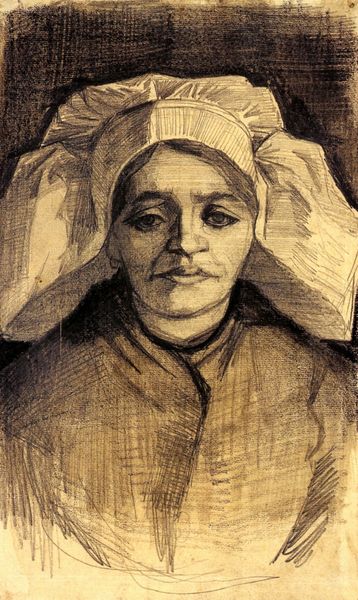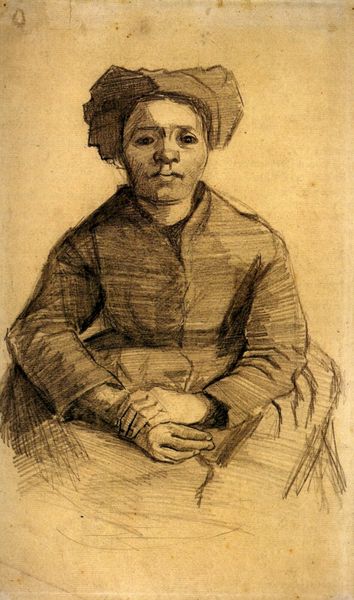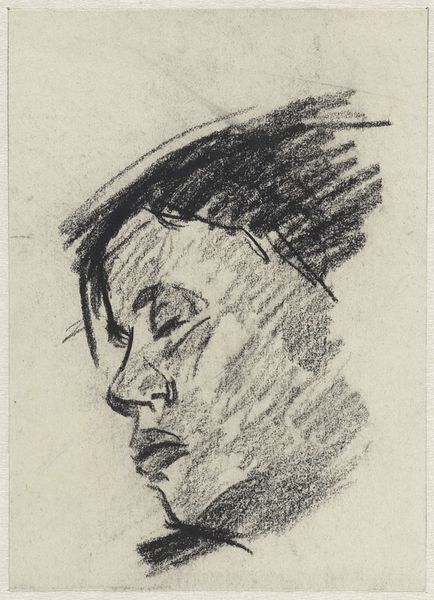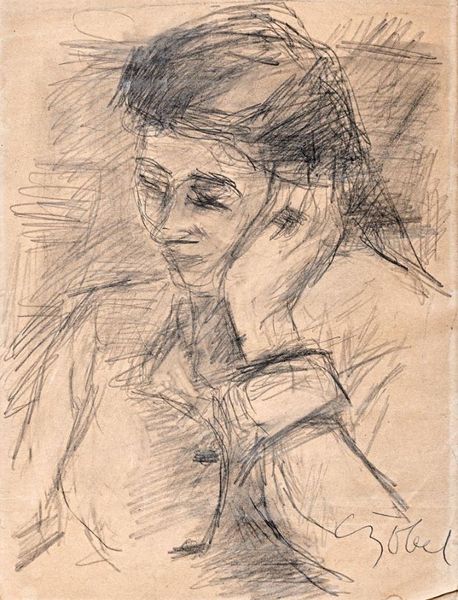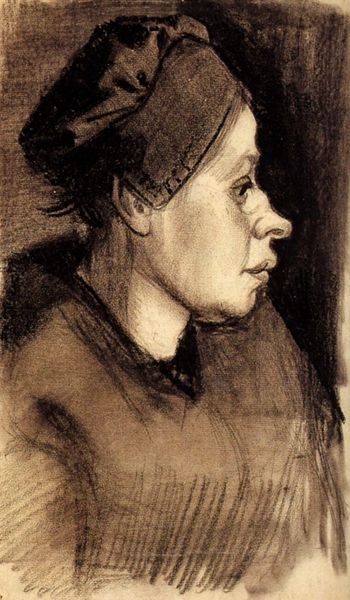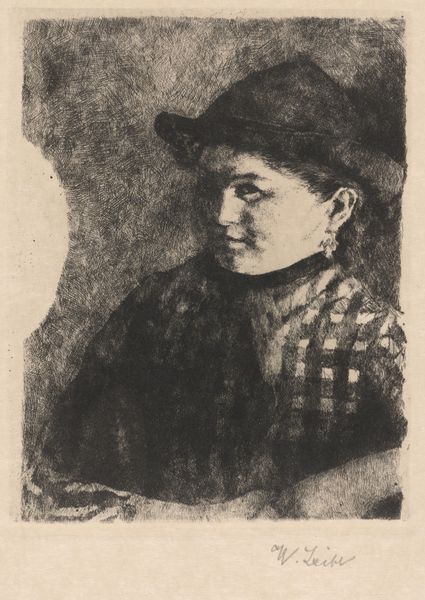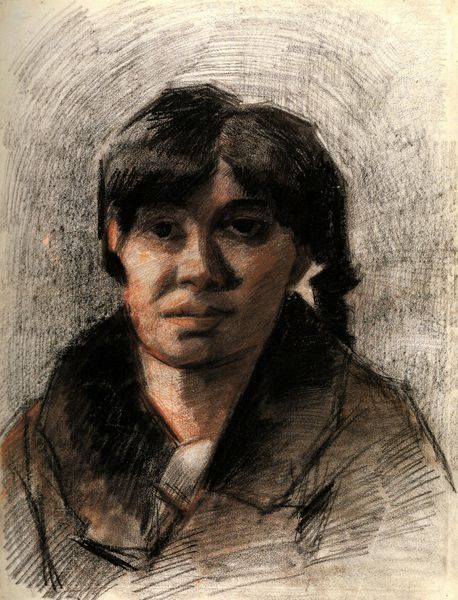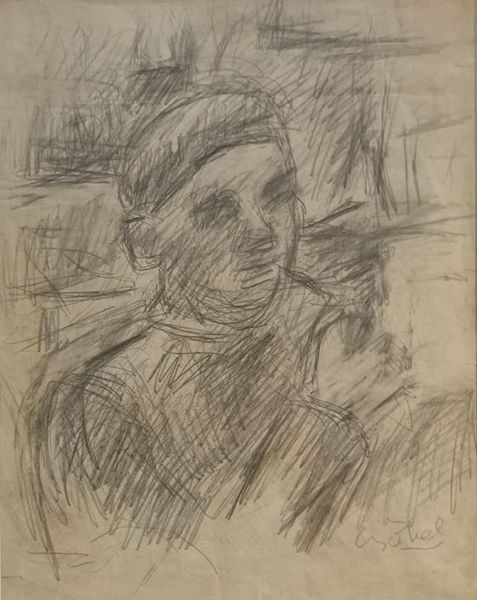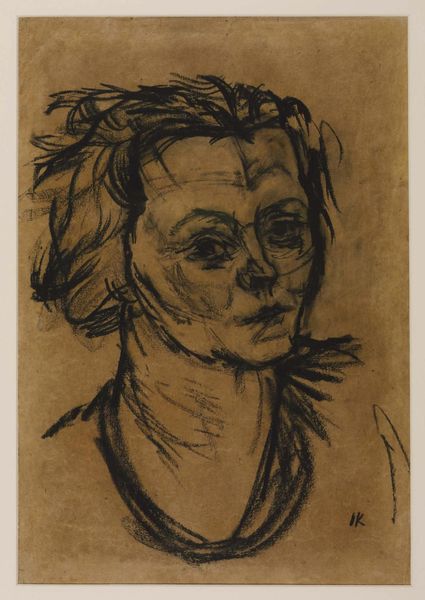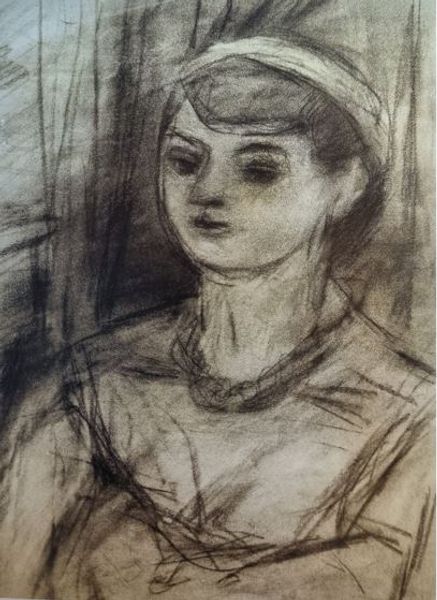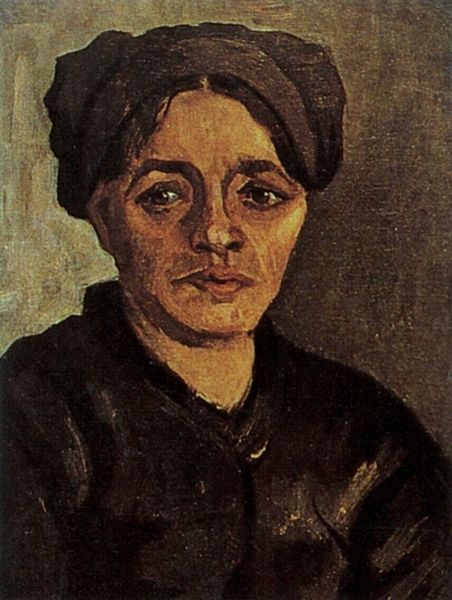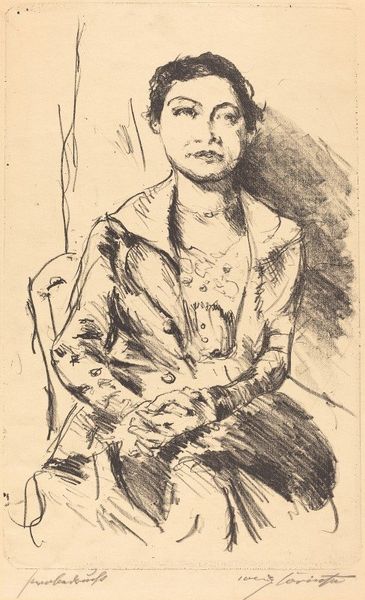
drawing, pencil, charcoal
#
portrait
#
drawing
#
dutch-golden-age
#
pencil sketch
#
charcoal drawing
#
pencil
#
portrait drawing
#
facial study
#
charcoal
#
post-impressionism
#
realism
Copyright: Public domain
Curator: Looking at Van Gogh's "Head of a Woman" from 1885, I am struck by the visible struggle and hardship etched on the subject’s face. Editor: It is almost painful to observe, isn't it? The density of lines around the eyes and mouth suggests both a somber mood, but also an interesting textural field, with varied tonal relationships. Curator: Absolutely. This drawing offers a glimpse into Van Gogh’s early period in the Netherlands, a time when he was deeply moved by the plight of peasants and laborers. He sought to represent them with empathy and brutal honesty. Editor: One sees this particularly in the layering of marks; crosshatching around the contours of the head suggests not just form, but a kind of nervous energy that’s rather affecting. You can almost feel the artist trying to capture the very essence of the figure. Curator: Consider how Van Gogh’s artistic ambitions at this time intertwined with his social conscience. He genuinely believed art should serve a purpose—to elevate the lives of ordinary people by recognizing their dignity and inherent worth. Editor: True, but at the formal level, the limited tonal range of the charcoal forces the artist to really maximize the effects created by simple hatching and shading, achieving through such means not just a likeness, but something much more compelling. The use of such rudimentary materials—pencil and charcoal—in contrast with the raw emotional content of the work generates a potent juxtaposition. Curator: Precisely. His dedication to realism also becomes his own unique style. Think about his later use of vibrant colors and brushwork. It’s an artistic rebellion, perhaps, born from representing figures that society overlooked or ignored. He captures that essence, even in its relative muted quality of this portrait, here on display at the Van Gogh Museum in Amsterdam. Editor: A beautiful fusion of intention and form indeed. The simplicity of the lines speaks volumes about the depth of human feeling. It seems impossible not to respond. Curator: Van Gogh's vision here truly amplifies our sensitivity towards people whose stories are often overlooked. Editor: And aesthetically, it is fascinating to behold such depth achieved with apparent effortlessness.
Comments
No comments
Be the first to comment and join the conversation on the ultimate creative platform.
